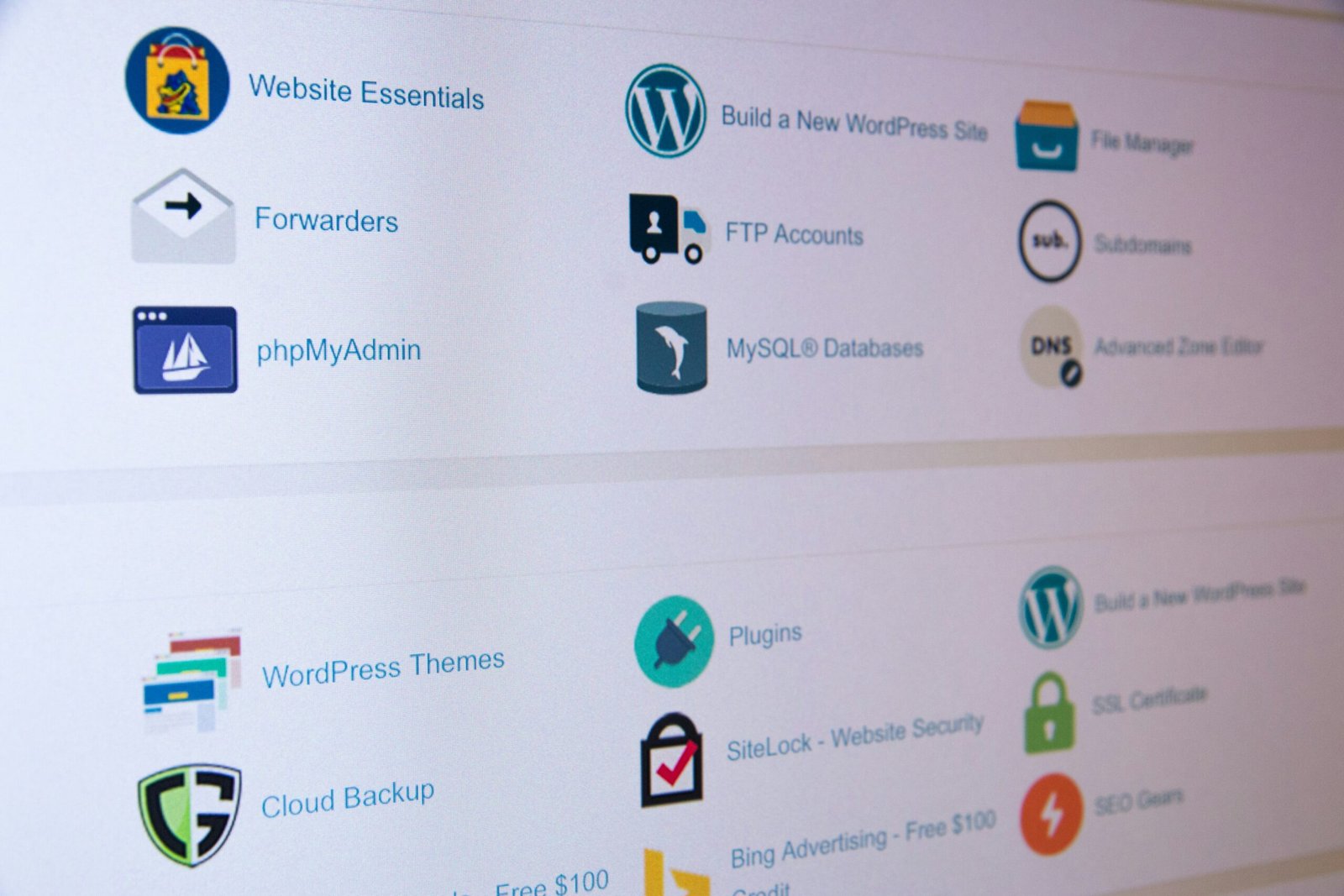Understanding the Need for a Website Redesign
In the ever-evolving digital landscape, the necessity for a website redesign becomes apparent for various reasons. One of the foremost triggers for considering a redesign is an outdated design. Websites that look and feel archaic can deter visitors, as first impressions are crucial in the online world. Modern design trends emphasize clean, responsive, and user-friendly interfaces, making it essential for businesses to refresh their websites periodically.
Poor user experience (UX) is another significant factor driving the need for a website redesign. A website that is difficult to navigate, slow to load, or not mobile-friendly can frustrate users, leading to high bounce rates and low engagement. Enhancing UX through a redesign can improve user satisfaction, fostering longer visits and higher interaction rates.
Low conversion rates are also a compelling reason to consider a redesign. A well-structured, visually appealing website can guide visitors through the sales funnel more effectively, boosting conversion rates. By optimizing the layout, call-to-action buttons, and overall user journey, businesses can turn more visitors into customers.
Additionally, the need for improved functionality often necessitates a redesign. As businesses grow and evolve, their website must adapt to accommodate new features, such as e-commerce capabilities, booking systems, or interactive elements. Integrating the latest technologies and functionalities can significantly enhance a website’s performance and user experience.
Staying current with design trends and technology is vital for maintaining a competitive edge. A fresh, modern website can distinguish a business from its competitors, showcasing its commitment to innovation and customer satisfaction. For instance, a company that regularly updates its website is likely to attract more customers and retain their interest compared to one with a stagnant online presence.
In conclusion, a website redesign can have a profound impact on business growth and user engagement. By addressing outdated designs, poor user experience, low conversion rates, and the need for improved functionality, businesses can ensure their websites remain effective tools for achieving their goals in the digital age.
Planning Your Website Redesign
The planning phase of a website redesign is critical to the project’s success. One of the first steps is conducting a thorough audit of your existing website. This audit will help you identify the site’s strengths and weaknesses, providing a clear picture of what currently works and what needs improvement. Assessing elements such as user experience, site performance, and content effectiveness will inform your redesign strategy.
Defining clear goals and objectives is another vital step. What do you aim to achieve with the redesign? Whether it’s improving user engagement, enhancing SEO, or increasing conversion rates, having specific goals will guide your design choices and development efforts. Equally important is understanding your target audience. Conducting user research to uncover their needs, preferences, and behaviors will ensure the redesigned site meets their expectations, leading to a more satisfying user experience.
Researching competitors is also essential. By analyzing their websites, you can identify industry trends, discover best practices, and find opportunities to differentiate your site. This competitive analysis will provide valuable insights into what works well and what doesn’t, helping you make informed decisions during the redesign process.
Setting a realistic budget and timeline is crucial for managing expectations and resources. A well-defined budget will help you allocate funds effectively, ensuring that essential features and functionalities are prioritized. Similarly, a clear timeline will keep the project on track, helping you meet critical milestones and launch dates.
Involving stakeholders and gathering feedback is fundamental to aligning the redesign with business goals and user needs. Engaging key stakeholders early in the process ensures their perspectives and requirements are considered, fostering a sense of ownership and support for the project. Additionally, collecting feedback from users through surveys, interviews, or usability testing can provide actionable insights to refine your redesign strategy.
By meticulously planning your website redesign, you can create a solid foundation for a successful project that not only meets business objectives but also delivers an exceptional user experience.
Design and Development Process
Embarking on a website redesign requires a meticulous approach to ensure a successful transformation. The initial phase involves creating wireframes and prototypes, which serve as blueprints for the new layout and functionality. Wireframes are essential for visualizing the structural framework, while prototypes provide a more detailed representation of the user interface, enabling stakeholders to interact with the site’s proposed features early in the process.
Incorporating user-centered design principles is crucial in this stage. These principles prioritize the needs and preferences of the end-users, ensuring that the website is intuitive and user-friendly. Techniques such as user personas, journey mapping, and usability testing can provide valuable insights into user behavior, guiding the design decisions to enhance the overall user experience.
Responsive design plays a pivotal role in modern web development. Given the diverse range of devices used to access websites, from smartphones to desktops, ensuring that the site is accessible and functional across all devices is paramount. Responsive design techniques, such as flexible grid layouts and media queries, allow the website to adapt seamlessly to different screen sizes, providing a consistent user experience.
The development phase follows, where choosing the right technology stack is a critical decision. The technology stack should align with the project’s requirements and future scalability. Common choices include content management systems (CMS) like WordPress, front-end frameworks such as React or Angular, and back-end technologies like Node.js or Ruby on Rails. Adhering to coding best practices, such as writing clean, modular code and maintaining proper documentation, is essential for efficient development and future maintenance.
Integrating necessary features and plugins further enhances the website’s functionality. These may include SEO tools, social media integrations, and e-commerce capabilities, depending on the website’s objectives. However, it is important to ensure that these integrations do not compromise the site’s performance.
Rigorous testing is the final but crucial step before the website launch. This includes functional testing to verify that all features work as intended, compatibility testing across different browsers and devices, and performance testing to ensure the site loads quickly and efficiently. Addressing any issues identified during testing will help prevent potential problems post-launch, ensuring a smooth user experience from the outset.
Launching and Maintaining Your Redesigned Website
Successfully launching a redesigned website requires meticulous preparation and execution. Pre-launch activities are crucial to ensure that the new site performs optimally and meets user expectations. Start with comprehensive final testing to identify any bugs or inconsistencies. This should include usability testing, cross-browser compatibility checks, and mobile responsiveness assessments. Ensuring that every aspect of the website functions as intended will mitigate potential issues post-launch.
Content migration is another critical step. It involves transferring all relevant content from the old site to the new one. During this process, it’s essential to update and optimize the content for SEO. Use relevant keywords naturally within the content, meta descriptions, and alt tags to improve search engine rankings. This will help in maintaining or enhancing the website’s visibility on search engines post-launch.
For a smooth launch, setting up redirects is vital. Redirects ensure that users and search engines are directed to the correct new pages from the old URLs, preserving the website’s SEO equity. Implement 301 redirects for permanent changes to inform search engines that the page has moved permanently. This helps in maintaining the link value and avoids 404 errors that could negatively impact user experience and search engine rankings.
Post-launch, it’s essential to monitor the website’s performance closely. Use analytics tools to track user behavior, page load times, and other critical metrics. Gathering user feedback during this phase can provide valuable insights into potential areas for improvement. Regularly review this feedback and analytics data to make necessary adjustments to the website.
Maintaining a redesigned website is an ongoing process. Regular updates and maintenance are necessary to keep the site secure, functional, and relevant. This includes updating plugins and themes, conducting security audits, and refreshing content periodically. Keeping the website up-to-date ensures that it continues to deliver a seamless experience for users and stays aligned with the latest industry standards and best practices.









